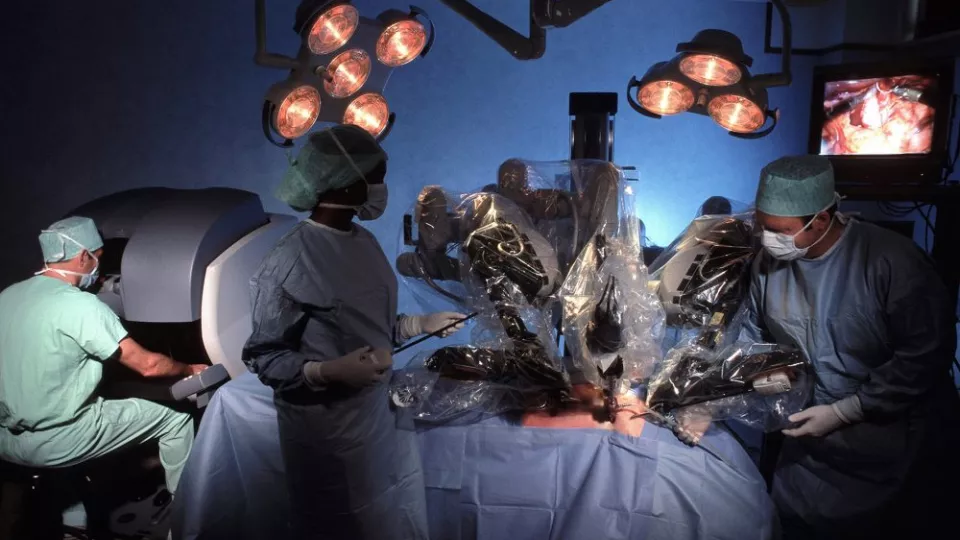The robot at the hospital somewhere in Sweden is connected and ready to operate. The surgeon, who is in another country, controls the advanced surgery. This is the future: wireless surgery via the internet. But will we be able to trust the speed and security of this wireless connection through the cloud?
It should work, with the help of the faster 5G technology and by bringing the cloud closer to the user, according to William Tärneberg and his colleagues at Lund University.
“Today, the cloud (to which we connect) consists of large data centres in Frankfurt, Dublin and London, among other places”, says William Tärneberg, doctoral student in Broadband Communication, continuing:
“Because the cloud is quite far from Sweden, data communication is delayed 15–20 milliseconds. It might not seem like much, but if you’re running a control program – like the one that regulates the actions of a surgeon-robot – the delay is critical. There is no room for error.”
Local data centres move the cloud closer
Researchers are now considering how to move the cloud closer to the user so that it can be accessed with less delay. William Tärneberg and his colleague Per Skarin, industry-employed doctoral student at Ericsson studying automatic control, imagine a system of several local data centres that communicate with each other in a fine mesh network. The control programs could be installed at all centres and thus bring the calculations closer to the user. A fine mesh network also means that the calculations could be made at the place where they best meet the other requirements of the process, such as cost or security, or the presence of additional components that may replace malfunctioning ones.
“This would allow us to do exciting things like running control processes in the cloud”, says William Tärneberg.
The components of the calculation program are moved around
But what if the control programs need to be used to different extents in different locations, for example by a driverless car while in motion? In such cars, each control measure – including speed and direction – requires fast calculations of its current surroundings. Meanwhile, the programs are not to consume resources when they are not in use.
“This could be solved by moving the calculations dynamically between smaller data centres in close proximity to the user”, says William Tärneberg.
Data power should be accessible to us in the same way that we get water when we turn on the tap.
The idea is to divide the calculation program of the control process into several components that automatically move between data centres while the control process is in effect. The goal is to ensure that the calculations are always carried out in the best location, depending on the internet situation.
Now there is a test system
There is a lot of research on the optimal execution of this solution, but no one has tested it in practice. William Tärneberg and Per Skarin have created a test system (see below) to investigate what happens if the control process is divided into components and distributed in a network of data centres.
“We just managed to get the constructed test system to work and we’ve begun testing where the control process components should be placed to ensure the best result. One problem is that moving calculation components between data centres takes time as the components cannot be used while they are transferred. How can we get these transfers to work without interrupting a critical part of the process? How long can this interruption last?”
There are several advantages of dividing the control processes this way, apart from having the calculations dynamically follow the user. If a particular subprocess stands alone while being used by many users simultaneously, it could be optimised in a way that is not possible today, as the entire control process serves as its own black box for each user. The use of control programs would also become more flexible, by having the most critical processes conducted closest to the user, while other less urgent processes can be placed further away.
5G technology diminish risk of delays
So where does 5G technology come in? In order for the wireless network to work quickly and securely, it is not enough to bring the cloud closer and to distribute subcalculations dynamically. Transfer delays are also due to the fact that the data power of wireless internet varies, for example in case of overload. In the future, more and more devices, with very different qualities and requirements, such as machinery, vehicles, goods etc., will be connected to the wireless network, increasing the demand on the internet.
“With the increase of the Internet of Things in the future, the network has to withstand more and more gadgets and processes that require control, and are entirely dependent on a functioning internet connection without delays”, says William Tärneberg.
This will be solved when the fifth generation of mobile phone technology (5G base stations) replace the current 4G solution. With 5G, you can quickly access many devices at the same time, with much shorter delay and higher reliability. The colleagues within ELLIIT have developed the first base station in the world for the 5G Massive MIMO technology. The base station is now part of the test system build by William Tärneberg and Per Skarin.
“Data power should be accessible to us in the same way that we get water when we turn on the tap or electricity when we plug a cord into the wall. And it will be, with the help of 5G and by bringing the cloud closer to the user”, concludes William Tärneberg.

